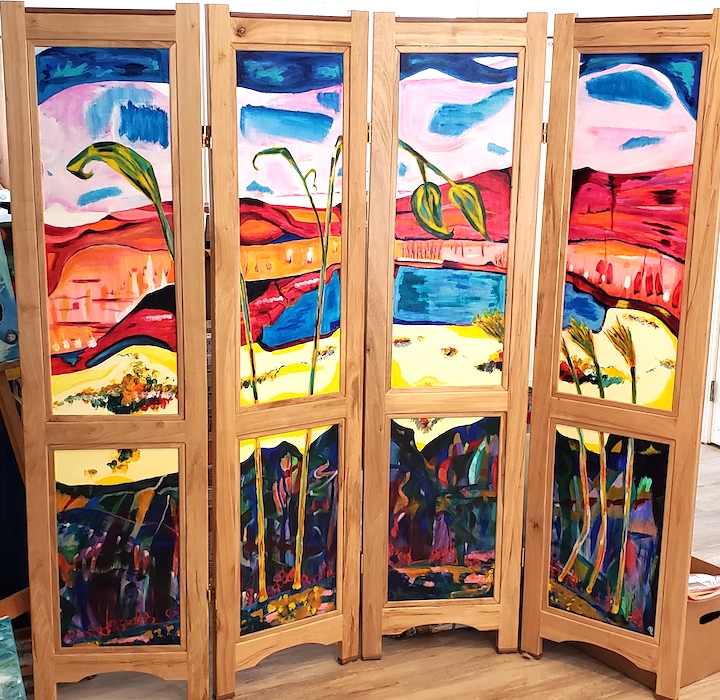
AROUND THIS TIMEa year ago, my friend and frequent collaborator Jonathan A. Wright and I decided to make a folding screen. Jonathan offered to design and build the frame for my paintings.
“The genesis for this folding screen,” writes Jonathan, “comes from a Marc Chagall dressing screen that I saw 25 years ago, and it stuck. The idea is to move Russell’s painting out into the space of the home (or other setting) and let the wood and the art interact with the space, the light, and the people moving about or being still.
“The screen is a source of privacy, definition, excitement, and meditation. As a four-section fold, it is versatile; yet the narrower panels are well proportioned and suitable for human-sized spaces.”
The wood selection follows Jonathan’s view of using the whole tree, whatever is at hand, not just the easy or perfect boards and pieces. The frame is spaulted birch, sustainably harvested locally in western Massachusetts. The tree gets its mineral staining characteristics from water and mineral infiltration into small wormholes, knots, storm damage tears, or lightning strikes.
In the past, says Jonathan, this wood would have been regarded as waste and defective. “Yet when we look more closely, we find that the beauty and wildness are naturally occurring variants on the ordinary. They give the maker, and the end user, a lifetime of inspiration and wonder.”
The materials were sawn and kiln dried in Amherst, and milled at Hall Tavern Farm in Shelburne, Massachusetts, a solar-powered facility.
The accent trims are black walnut, a storm-downed local yard tree, sawn and air dried for ten years. The finish is Vermont Natural Coatings PolyWhey, a very low VOC urethane which uses waste dairy whey for its polymer feedstock.
JONATHAN AND I worked independently for the most part, consulting each other from time to time or occasionally dropping in on each other’s studio to gauge the progress of the work and visualize how it would all fit together.
My job was to paint four tall panels (34”x12”) above four short panels (21”x12”) on both sides, making 16 paintings in all.
We experimented with materials, and I consulted with other painters. We tried Masonite first (I didn’t like its surface, and it edges become vulnerable to moisture over time), then ½” plywood that was too thick and heavy, and I considered using aluminum or PVC panels. I ended up choosing ¼” birch plywood, which provided a good, durable painting surface and was light enough for the task.
During the time we spent deciding on materials, I painted several narrow, vertical canvases to become more comfortable with the panel dimensions, so different from my usual blunt rectangles.
For this novel, sprawling, and potentially messy project, I chose acrylic rather than oil paint for its shorter drying time.
The screen design had to harmonize, and set a comfortable, soothing tone. It had to be lively and of enduring interest yet be capable of becoming part of the background at times.
I laid the panels on the floor side by side but a few inches apart, and I began to paint. I went back and forth painting either side over a period of weeks.
On one side I painted an abstract design that ranged across all four panels, top and bottom. Purely as a design, it worked. But I came to realize over time that it was more challenging than relaxing. It confronted the viewer rather than inducing calm, demanding attention but with its meaning unclear.
After considering several “fixes,” this fall I finally painted over it, using large streaks of color for a quieter, unobtrusive mood. The panels are varied and bright, but they can easily serve as a background
On the other side, I painted rows of blended landscapes across both the top and bottom panels. But this initial effort, too, fell short, tentative in mood, tepid in color, and lacking adequate detail. I went back to the drawing board this fall, repainting the scene with greater conviction and vigor.
I then lived with the screen in my studio for a couple of months until I was satisfied that it could endure as “a source of privacy, definition, excitement, and meditation.” The screen now has distinct and soothing moods, one engaging, one calming, depending on the side.
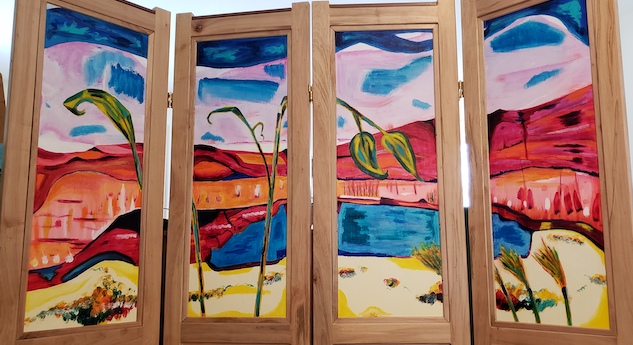
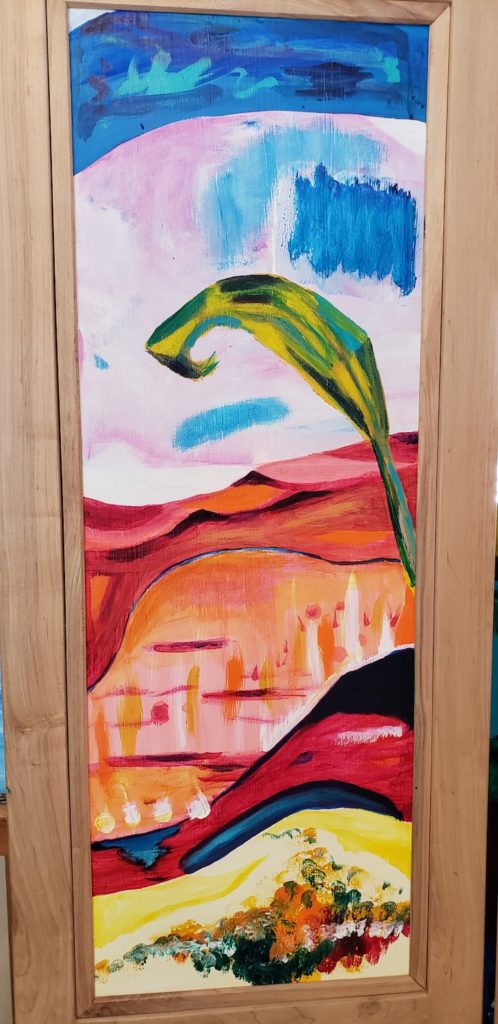
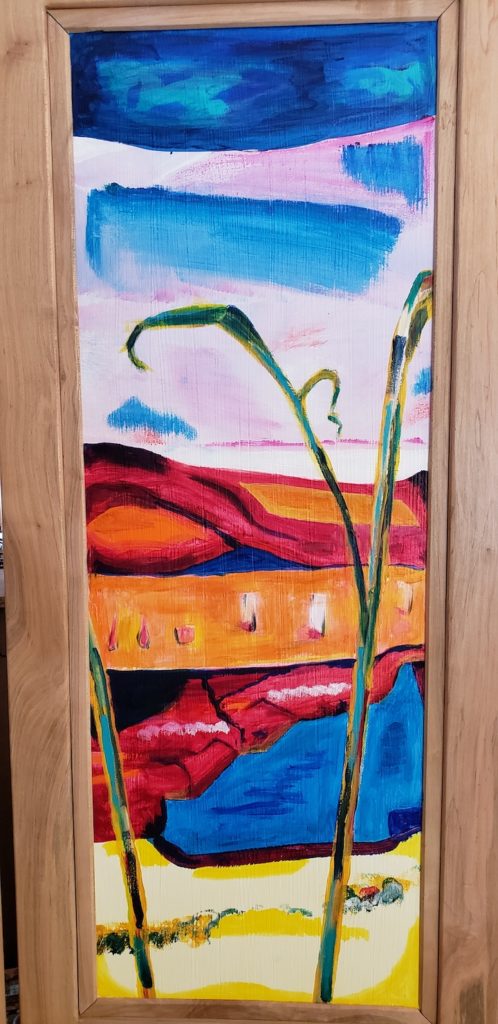
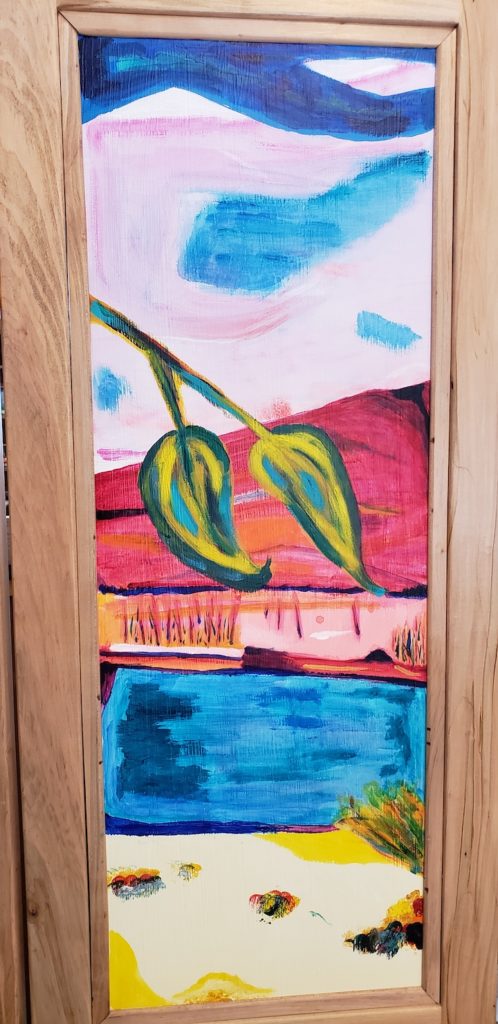
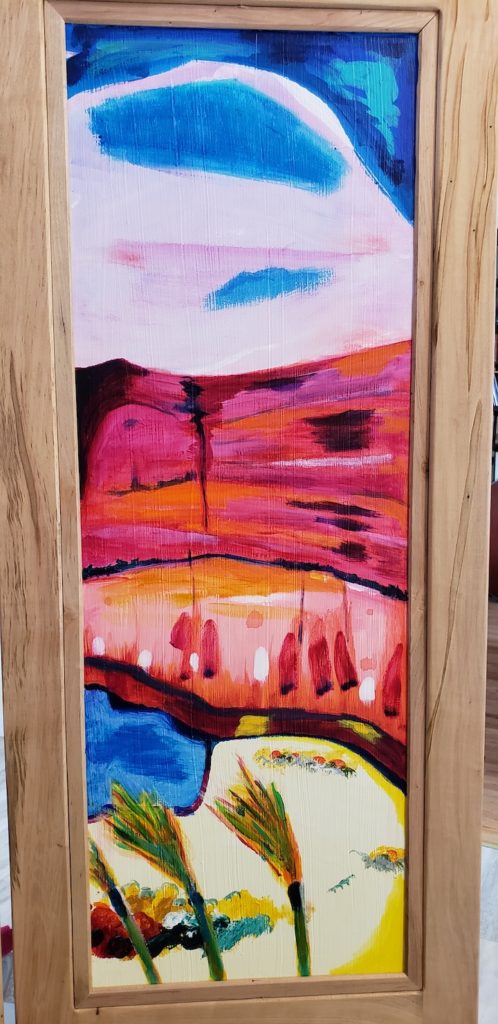
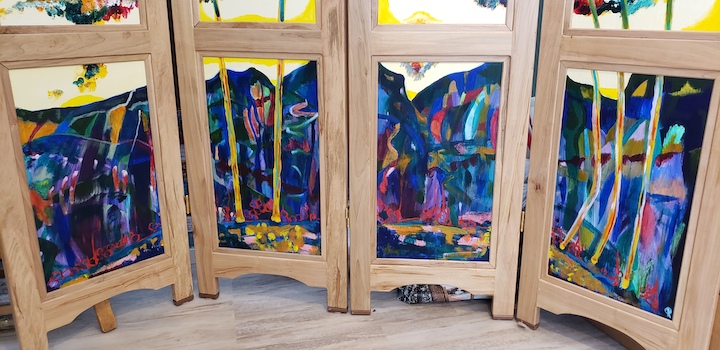

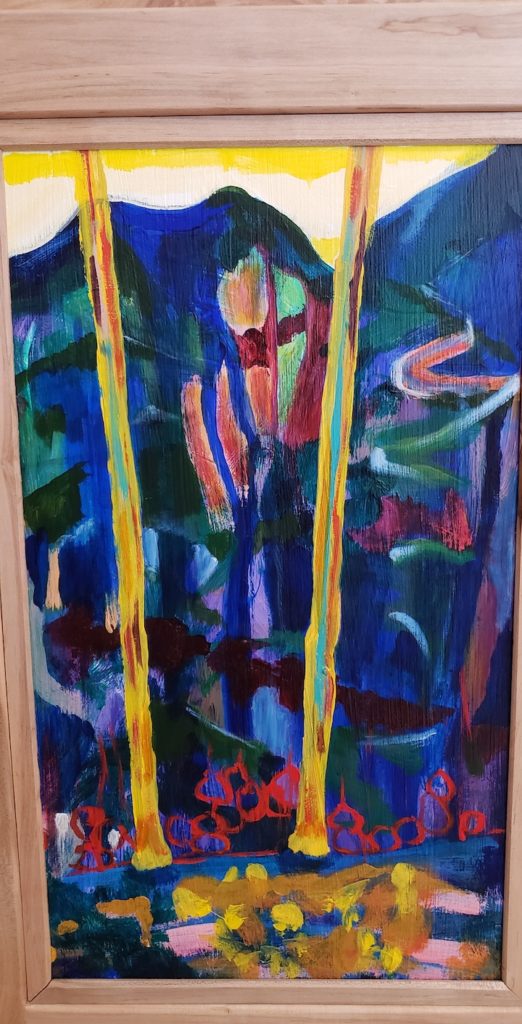
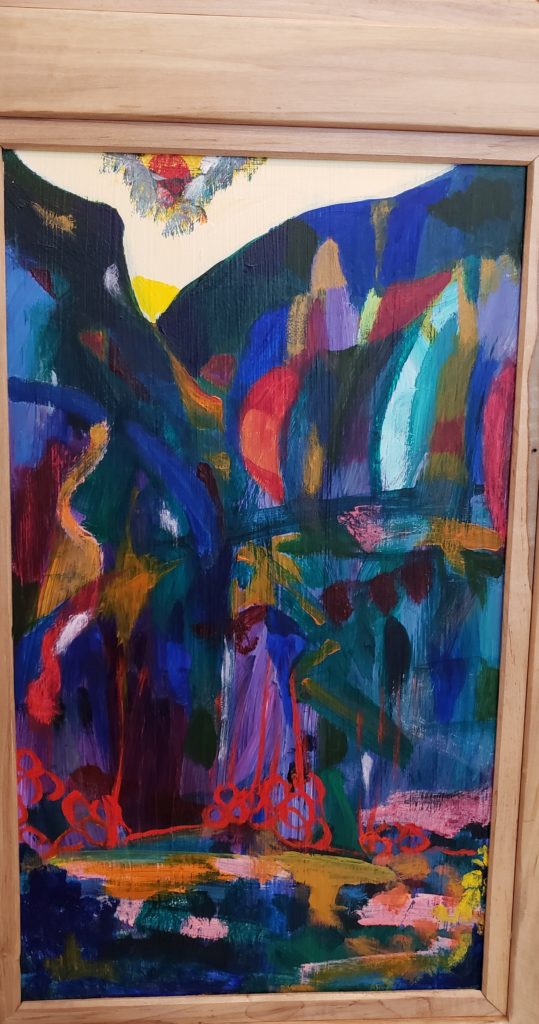
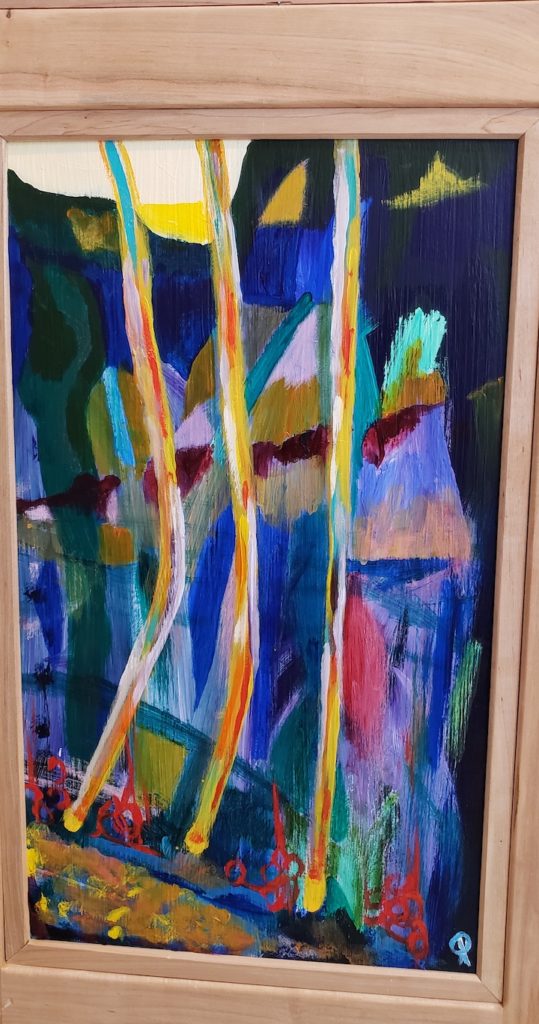
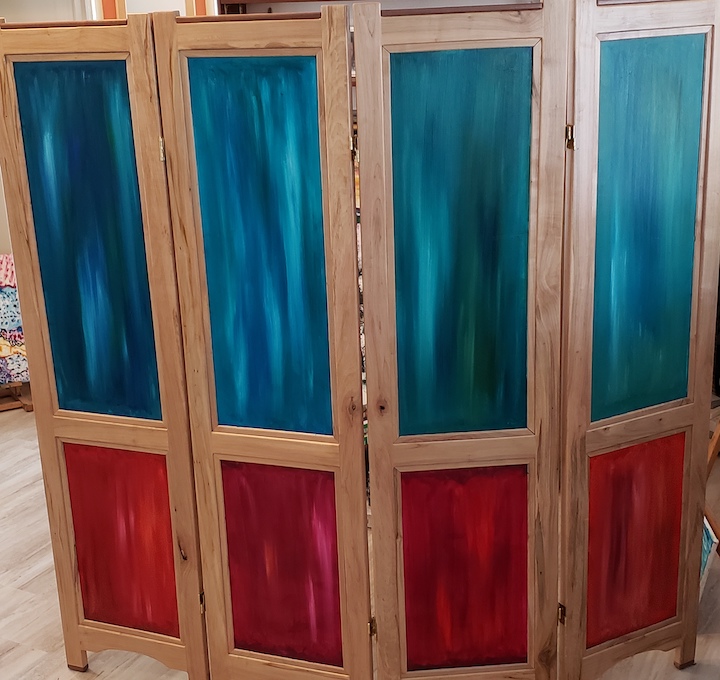
Russell Steven Powell and Jonathan A. Wright have collaborated for nearly 15 years on art, photography, sculpture, social action, and publishing projects. Jonathan lives in Northampton, Massachusetts, and is best known as a builder, poet, designer, and author of three books, including Living Building Makers(2019, Ecotone Publishing).

Hey Russ. one of my favorite works by you.
Thanks, Eric! Much appreciated. I hope we can meet for lunch soon.